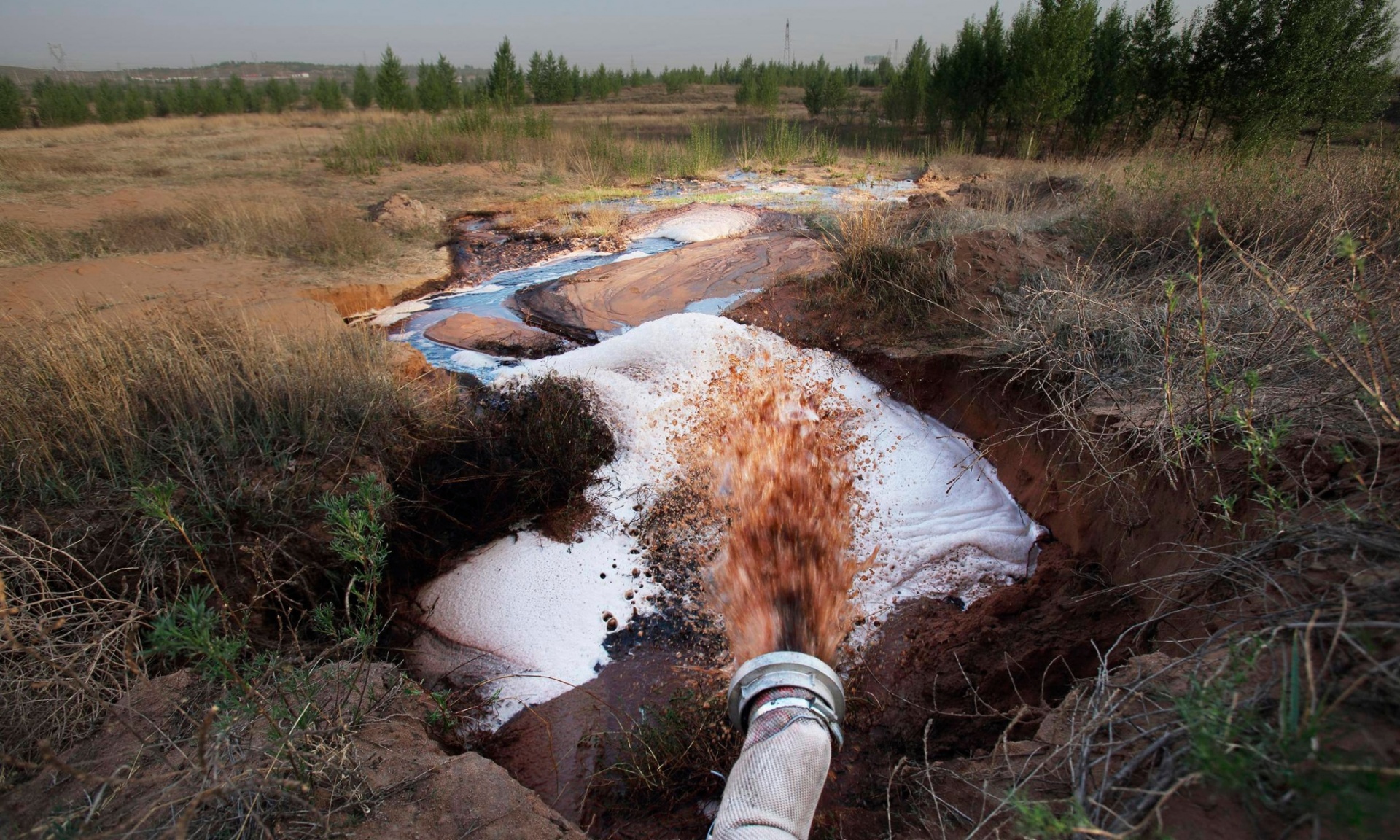One person died and 50 were arrested
after some 2,000 police, using
rubber bullets, tear gas and water
cannons, put down a protest by
villagers against pollution from a
chemical plant in China’s Inner
Mongolia, an overseas human rights
group said.
Inner Mongolia has seen sporadic
unrest since 2011 when the vast
northern region was rocked by
protests after an ethnic Mongol
herder was killed by a truck after
taking part in demonstrations
against pollution caused by a coal
mine.
Ethnic Mongols, who make up less
than 20 percent of Inner Mongolia’s
24 million population, say their
grazing lands have been ruined by
mining and desertification and that
the government has tried to resettle
them in permanent houses.
Coal rich Inner Mongolia is supposed
to enjoy a high degree of self-rule,
but many Mongols say the Han Chinese
majority has been the main
beneficiaries of economic
development.
In the latest incident, villagers in
Naiman Banner took to the streets to
protest against a chemical
processing zone they said was
polluting farmland and grazing land,
the New York-based Southern
Mongolian Human Rights Information
Centre said in a statement late on
Monday.
The group quoted a witness as saying
police used rubber bullets, tear gas
and water cannons to disperse the
demonstrators, leading to one death.
An official who picked up the
telephone at the local government
said he was unable to confirm any
deaths and declined to comment
further.
However the government posted on its
official microblog on Monday that it
had ordered the chemical zone to
close and shift to another
undisclosed location and that it
would punish any rule breaking by
the companies there.
The government also said that it
would go after protesters who
blocked roads, smashed up vehicles,
stoked tension or spread rumours.
About 90,000 "mass incidents" - a
euphemism for protests - occur each
year in
China, triggered by corruption,
pollution, illegal land grabs and
other grievances.
Aware at the anger over
environmental problems, the Chinese
government has declared a war on
pollution, vowing to abandon a
decades-old growth-at-all-costs
economic model that has spoiled much
of China’s water, skies and soil.






 Beyond
Great Walls: Environment, Identity, and Development on the Chinese
Grasslands of Inner Mongolia
Beyond
Great Walls: Environment, Identity, and Development on the Chinese
Grasslands of Inner Mongolia China's
Pastoral Region: Sheep and Wool, Minority Nationalities, Rangeland
Degradation and Sustainable Development
China's
Pastoral Region: Sheep and Wool, Minority Nationalities, Rangeland
Degradation and Sustainable Development The
Ordos Plateau of China: An Endangered Environment (Unu Studies on
Critical Environmental Regions)
The
Ordos Plateau of China: An Endangered Environment (Unu Studies on
Critical Environmental Regions)